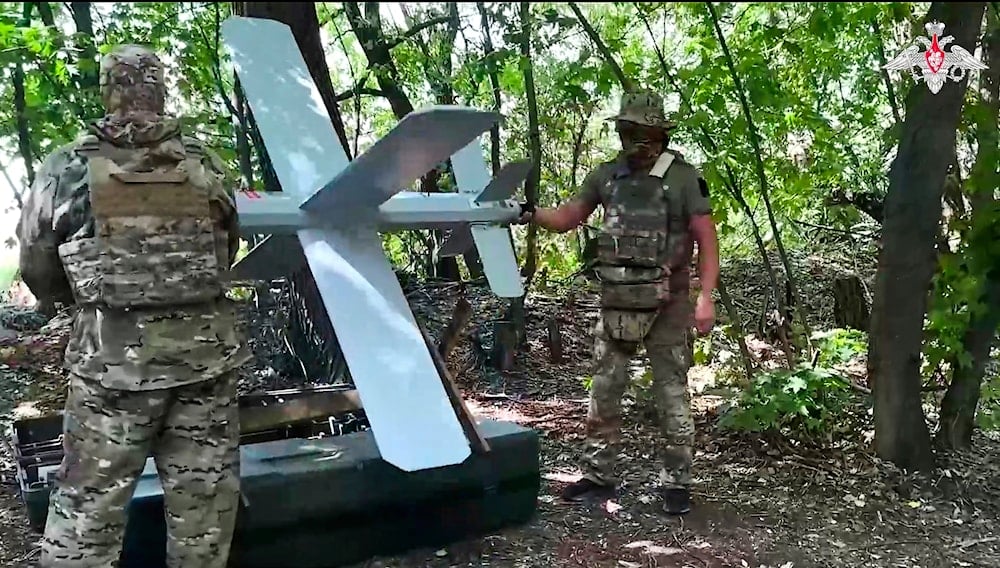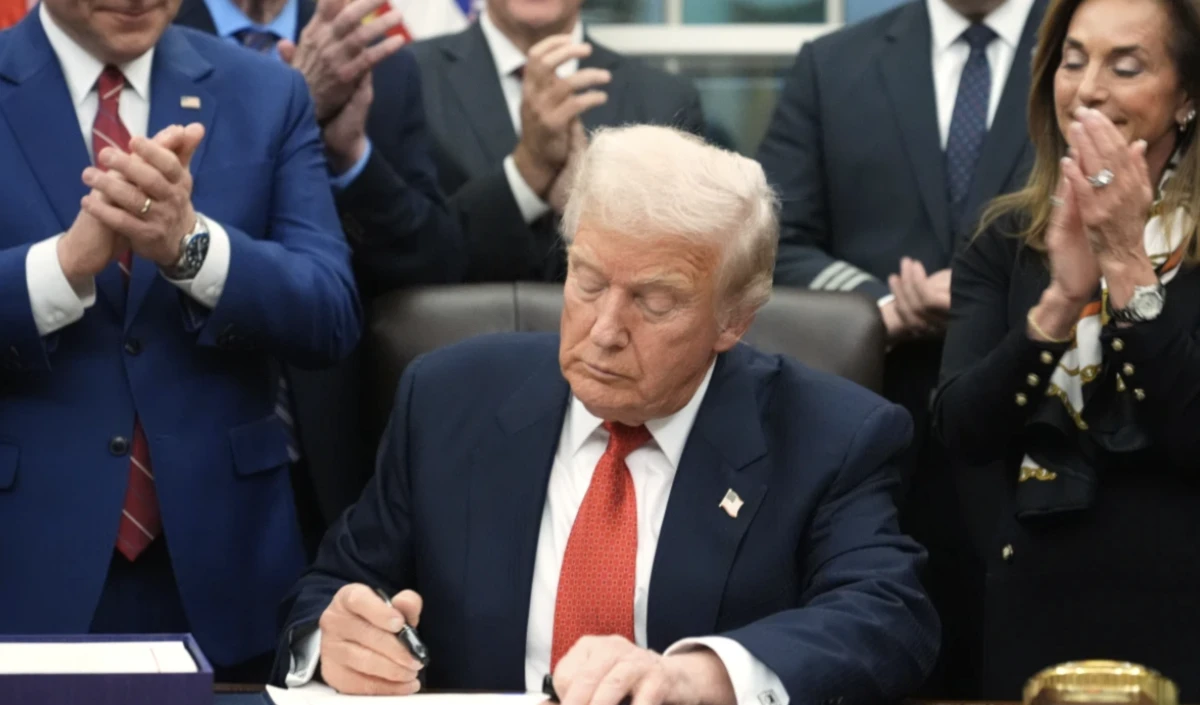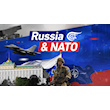Moment of truth: Will the US remain committed to Europe’s defense?
Russia's alleged drone strike on Poland sparks a NATO crisis, testing US security guarantees and exposing long-standing tensions in the alliance.
-

In this photo taken from video distributed by Russian Defense Ministry Press Service on Wednesday, July 23, 2025, Russian soldiers prepare a Lancet drone for action in an undisclosed location in Ukraine (AP)
Earlier this week, Russia’s alleged drone incursion into Poland triggered the long-feared NATO crisis, forcing an immediate test of the United States' commitment to defending its allies. This event shatters the illusion that such a confrontation could be indefinitely postponed, making the world wait to see if American security guarantees still hold.
For years, allies employed a strategy of appeasing Donald Trump, tolerating humiliation and tariffs to avoid this exact scenario. This allowed everyone to maintain the facade of transatlantic unity while delaying the hard choices about European self-reliance, but that strategy has now collapsed with the arrival of a direct attack, Robert Kagan stated in an op-ed for The Atlantic.
From Putin’s perspective, there was every strategic incentive to force a confrontation immediately rather than delay, and the only surprising aspect of his decision to attack Poland is that he had not taken this provocative action sooner, though Russia denies any involvement in sending drones into Polish territory, according to The Atlantic.
Historically, the laws of neutrality considered a nation a belligerent if its government directly provided weapons to a country at war, making it a legitimate target for attack. This framework, which was standard prior to World War II, did not distinguish between aggressor and victim, focusing solely on the act of supplying military aid. Private arms sales were the exception, but government-to-government transfers were a clear violation of neutrality.
Kagan highlighted that from a historical legal perspective, Putin has always had a viable option to attack NATO supply lines into Ukraine. Bombing the routes through Poland, Romania, or Slovakia to cut off the flow of weapons would have been an action within his rights under these traditional rules of war. This longstanding principle is why such an escalation has always been a foreseeable risk.
Only party more afraid of US intervention was US itself
Several factors likely delayed this action, according to Robert Kagan. Initially, Russia's military capacity was limited, as evidenced by its struggles to target Kyiv consistently. However, analysts assess that the primary deterrent was the significant risk of directly engaging NATO and the United States in the conflict, which represented a major strategic concern for Moscow, particularly after its forces failed to secure a quick victory and became entrenched in Ukraine.
A direct NATO entry into the conflict would have been catastrophic for Russian forces, as US capabilities could swiftly sever critical supply lines like the Kursk Bridge, trapping and decimating Moscow's troops. Faced with an unwinnable conventional war, Putin's only alternatives would have been a suicidal nuclear exchange or surrender. Consequently, despite his nuclear posturing, he meticulously avoided actions that would trigger a direct NATO military response.
From the outset, American officials exhibited a profound fear of direct intervention that often appeared to rival Putin's own. Following the acquisition of detailed intelligence on Russia's plans in late 2021, the Biden administration's response was limited to issuing warnings, threatening sanctions, and sharing intelligence with allies and the media. This pattern of caution, prioritizing deterrence and disclosure over any action that might be seen as escalatory, persisted throughout the subsequent stages of the war.
The Biden administration deliberately avoided any military moves that could be interpreted as a willingness to engage, such as deploying ships to the Black Sea or forward-positioning NATO troops. It carefully refrained from any action that signaled a potential military response to the anticipated invasion. This extreme caution was exercised even with full knowledge that an attack was imminent.
How Russia navigated the beginning of the war
From Putin’s perspective, the signals were likely clear: his initial strategy relied on a rapid victory to present NATO with a fait accompli. However, the United States, despite having detailed knowledge of his plans for months, meticulously avoided any military preparations or threats, indicating that their response would be limited to economic sanctions, a consequence he had already calculated he could endure.
With the operation stalled and nearly 200,000 troops vulnerable in Ukraine, Putin faced a potential defeat; any NATO threat to destroy key infrastructure like the Kursk Bridge would have trapped his forces, leaving him only the catastrophic choice between surrender and an unwinnable global nuclear war, according to The Atlantic. Using tactical nukes in Ukraine would have irradiated his own army while leaving NATO's conventional forces fully intact to finish the job.
And yet, once again, the United States refrained from any direct military engagement, choosing instead to supply Ukraine with weapons that came with significant restrictions on their use, and it deliberately avoided any action that could be perceived as aggressive, thereby allowing Putin to successfully navigate through what was the greatest moment of peril for Russia since the battle of Stalingrad.
After surviving his initial strategic disaster and accurately assessing American reluctance to intervene, Putin logically escalated by pressuring Ukraine's neighbors and supply lines. This move directly exploited the central contradiction in US policy, which aimed to arm Ukraine while avoiding a direct clash with Russia. For years, Putin avoided forcing Washington to choose between these goals, but that calculation has now changed, The Atlantic revealed.
Moving the goalposts
Russia's main goal is to make Ukraine surrender, and the attacks allegedly launched into Poland are meant to create fear and turn Polish people against supporting Ukraine, especially if they start to doubt that the United States will defend them, which could then force Ukrainians to face the reality of fighting without any outside help.
Beyond Ukraine, Putin's broader objective is the dissolution of NATO itself, The Atlantic maitains. He has long pursued a "shadow war" against member states, employing sabotage, arson, and assassination to erode their will to support Kiev.
This strategy aims to make the cost of aiding Ukraine prohibitively high. The US response under Trump, urging European self-reliance, hinting at troop withdrawals, and canceling key defense programs, has inadvertently advanced Putin's goal by signaling American retreat.
The Atlantic concludes that Putin's "shadow war" was a test to gauge US tolerance, and the lack of response encouraged him to escalate into open attacks on Poland. This move directly forces the issue of American commitment into the open. While ignoring strikes in Ukraine was one thing, a failure to respond to an attack on a NATO ally would force Europe to finally accept that US security guarantees are no longer reliable.

 6 Min Read
6 Min Read











